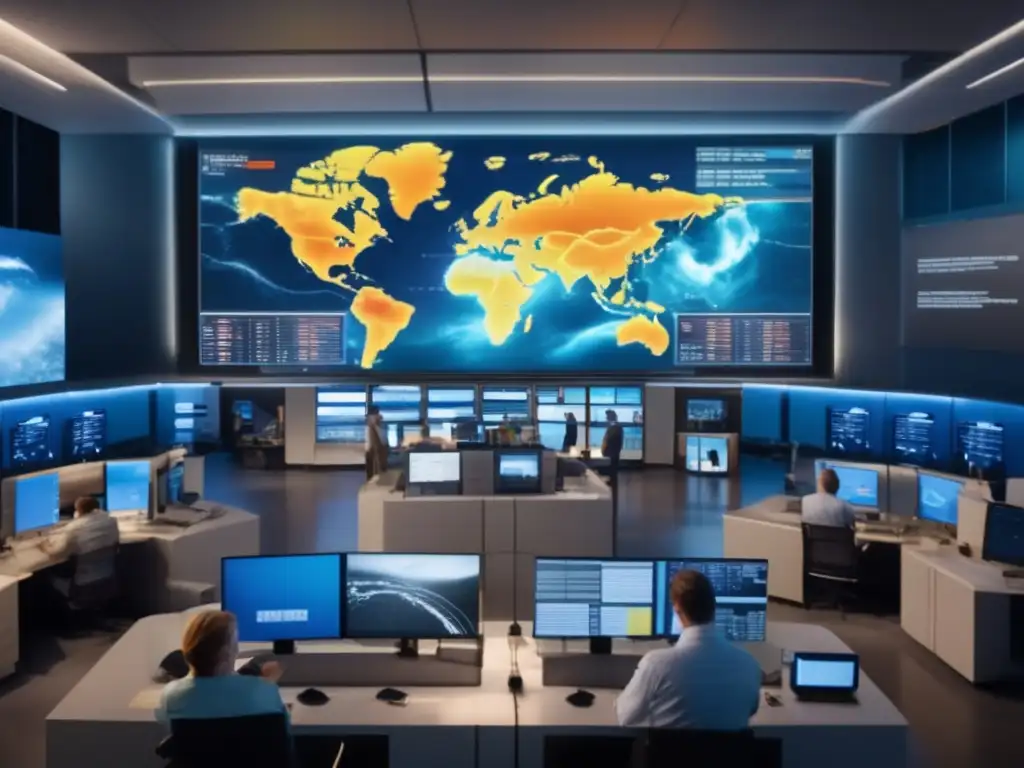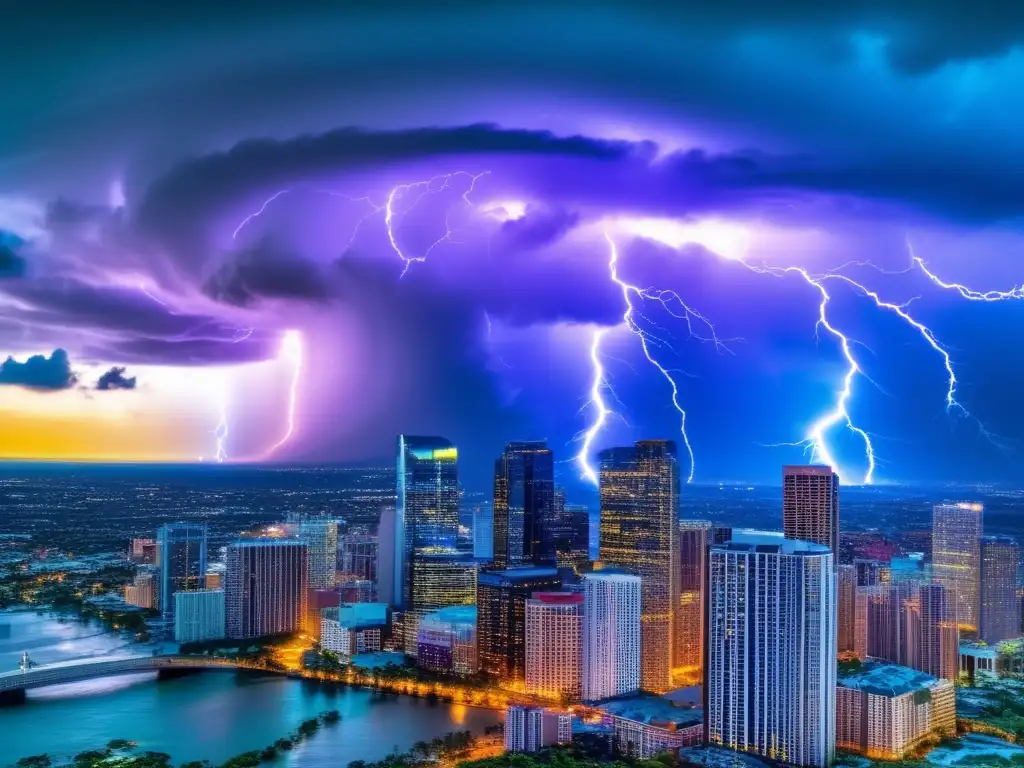Predicting The Unpredictable: The Challenges Of Hurricane Forecasting

Predicting the Unpredictable: The Challenges of Hurricane Forecasting
Introduction
Hurricanes are one of the most devastating natural disasters, and understanding how they form and predicting their path is crucial in mitigating their impact. Hurricane forecasting has come a long way since the 19th century, but it still remains a challenging task due to the unpredictable nature of these storms. In this article, we will explore some of the challenges that meteorologists face when predicting hurricanes, as well as the current tools and techniques used in hurricane forecasting.
The Science of Hurricanes

Formation
Hurricanes form over warm ocean waters when moist air rises and then cools, condensing into clouds. This process releases heat, which adds energy to the storm, causing it to grow stronger. Wind patterns in the upper atmosphere can also influence the path and strength of a tropical storm, making them difficult to predict accurately.
Tracking
Once a hurricane forms, it is tracked by meteorologists who use various tools, such as satellites, radar, and aircraft, to collect data about the storm's location, size, and intensity. This data is then used to create computer models that predict the hurricane's path and strength.
Intensity
Predicting a hurricane's intensity is one of the biggest challenges meteorologists face. While tracking the storm's path is relatively straightforward, determining its strength is much more complex. Various factors, such as wind shear and sea surface temperatures, can affect a hurricane's intensity, making it difficult to predict accurately.
The Challenges of Hurricane Forecasting

Data Availability
One of the biggest challenges in hurricane forecasting is the availability of data. While there are many tools and techniques used in hurricane tracking and forecasting, the accuracy of these predictions is largely dependent on the quality and quantity of data available. In areas where weather monitoring systems are limited, forecasting can be particularly challenging.
Complexity of the Storm
Hurricanes are complex systems that are difficult to predict accurately due to their constantly changing nature. The strength, size, and track of a hurricane can vary significantly over time, making it challenging to develop accurate computer models.
Unpredictable Patterns
Despite advances in hurricane forecasting technology, the unpredictable nature of tropical storms remains a significant challenge. Small changes in wind patterns, sea surface temperatures, or atmospheric conditions can have a significant impact on a hurricane's path and intensity, making it impossible to predict with absolute certainty where and when a hurricane will make landfall.
The Tools and Techniques of Hurricane Forecasting

Satellite Data
Satellites provide valuable information about a hurricane's location, size, and intensity. Satellites also measure sea surface temperatures, which can help meteorologists predict how much energy a hurricane will have and how it might evolve over time.
Radar
Radar technology provides information about a hurricane's location and movement. Doppler radar can also detect a hurricane's wind speed, direction, and rotation, providing valuable information about its intensity and potential path.
Aircraft Data
Aircraft are often used to collect data about a hurricane, including its location, size, and intensity. Planes equipped with specialized instruments can fly into the eye of a hurricane to gather valuable information about its structure and strength.
Computer Models
Computer models use data from satellites, radar, and aircraft to predict a hurricane's path and intensity. These models incorporate complex algorithms and mathematical equations to simulate the behavior of hurricanes, taking into account factors such as wind patterns, sea surface temperatures, and atmospheric conditions.
Frequently Asked Questions

-
Can hurricanes be predicted with 100% accuracy?
No, due to the unpredictable nature of tropical storms, it is impossible to predict their path and intensity with 100% accuracy. However, advances in hurricane forecasting technology have made it possible to provide more accurate and timely predictions than ever before.
-
How long does it take to prepare a hurricane forecast?
The preparation of a hurricane forecast can take anywhere from a few hours to several days, depending on the complexity of the storm and the amount of data available.
-
What is the most challenging aspect of hurricane forecasting?
The most challenging aspect of hurricane forecasting is accurately predicting a storm's intensity. While tracking a hurricane's path is relatively straightforward, determining its strength is much more complex.
-
What happens if a hurricane forecast is incorrect?
If a hurricane forecast is incorrect, it can have serious consequences for those in the storm's path. This is why meteorologists strive to provide the most accurate and timely forecasts possible.
-
How do hurricane forecasts impact emergency preparedness?
Hurricane forecasts play a critical role in emergency preparedness, giving residents in hurricane-prone areas time to evacuate or take other necessary precautions to stay safe.
Conclusion
Hurricane forecasting is a critical tool in mitigating the impact of these devastating storms. While there are many challenges associated with predicting hurricanes accurately, advances in technology have made it possible to provide more accurate and timely forecasts than ever before. As hurricane season approaches, it is essential to stay informed and prepared. We encourage our readers to stay up-to-date with the latest hurricane-related news and take necessary precautions to stay safe.
Finally, we invite our readers to share their thoughts and experiences in the comments section. Engage positively with hurricaneinsider.org by subscribing, sharing this article on social media, or other forms of participation. Thank you for taking the time to read this article, and we wish everyone a safe and peaceful hurricane season.
Additional Resources

For those interested in learning more about the science of hurricanes and hurricane forecasting, we recommend the following resources:
 Dispelling Hurricane Myths
Dispelling Hurricane Myths The Legacy Of Hurricane Sandy: A Retrospective Analysis
The Legacy Of Hurricane Sandy: A Retrospective Analysis The Role Of Global Warming In Hurricane Intensity And Frequency
The Role Of Global Warming In Hurricane Intensity And FrequencyIf you want to discover more articles similar to Predicting The Unpredictable: The Challenges Of Hurricane Forecasting, you can visit the Basic knowledge about hurricanes: category.
Leave a Reply

Articulos relacionados: